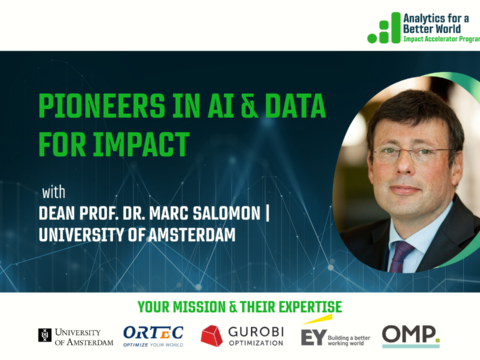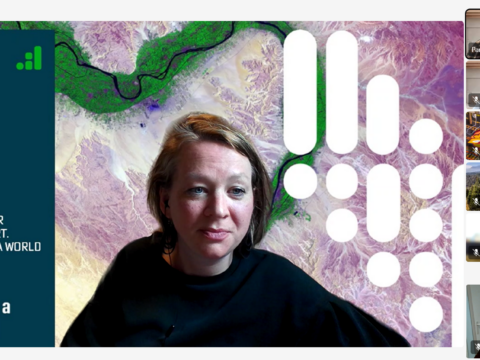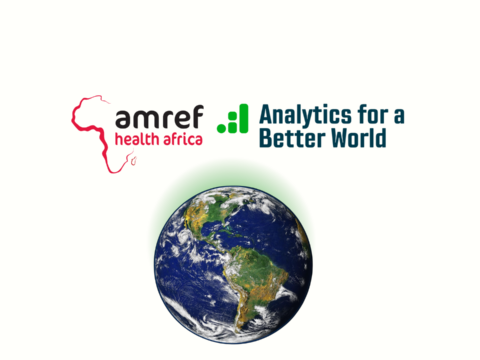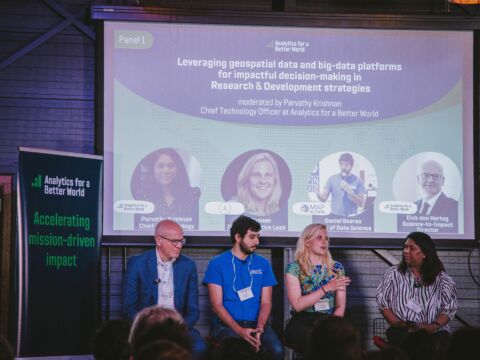Rosalia Mwai
See profileAnalytics for a Better World
See profileABW Fellowship Stories: Rosalia Mwai
Information Systems Assistant at the United Nations Environment Programme
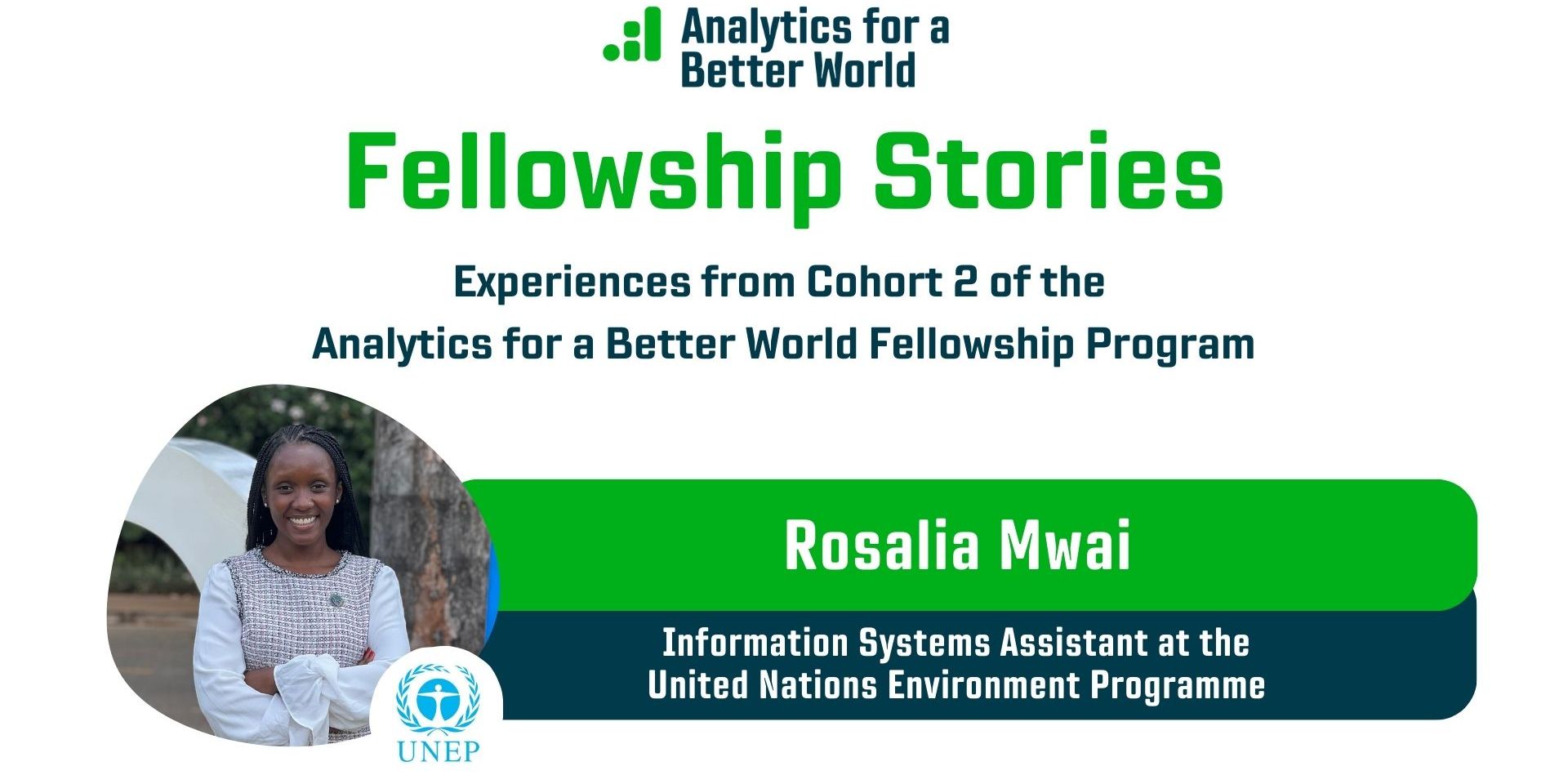
Last year, Rosalia Mwai, Information Systems Assistant at the United Nations Environment Programme (UNEP), participated in the Analytics for a Better World Fellowship Program. During the last part of the program, Rosalia developed a project, titled "Decoding Kenya's Footprint", aimed at understanding the evolution of carbon emissions and their links to various industries and emission sources.
Last year, Rosalia Mwai, Information Systems Assistant at the United Nations Environment Programme (UNEP), participated in the Analytics for a Better World Fellowship Program.
During the last part of the program, Rosalia developed a project, titled “Decoding Kenya’s Footprint“, aimed at understanding the evolution of carbon emissions and their links to various industries and emission sources. The project followed three steps:
- Analyzing emission trends: investigating historical trends in carbon emissions to identify patterns over the specified period.
- Contribution assessment: determining the emissions contributed by various industries and sources, offering insights into the main drivers of carbon emissions.
- Actionable insights/forecast: to enable stakeholder to make informed decisions and support the SDGs.
We interviewed Rosalia to showcase her experience in the 2023 Analytics for a Better World Fellowship Program. Through introducing her role and her work during the fellowship, she gives an overview to what the fellowship experience is like, and she shares advice for new participants.
Thank you Rosalia for participating and for sharing your experience with us!
Could you briefly introduce yourself and your work at United Nations?
Hello, I’m Rosalia Mwai, an Information Systems Assistant at the United Nations Environment Programme (UNEP). My work mainly involves supporting the analysis, design, development, and deployment of various Digital Transformation Sub-Programme deliverables, particularly focusing on Online Service Desks. I also assist in drafting and maintaining project plans, and schedules, as well as identifying appropriate resources for project completion.
How have you used time series tools and forecasting to understand the evolution of Kenya’s carbon emissions, and what have been the biggest challenges in linking emissions to specific industries?
In decoding Kenya’s carbon footprint, I utilized time series tools and forecasting techniques to comprehend the evolution of carbon emissions. Initially, I collected and cleaned data from various sources, and using Python libraries such as pandas and NumPy, I conducted exploratory analysis to uncover trends and patterns in carbon emissions over time.
The primary challenge I encountered was ensuring the accuracy of the forecasts, particularly when employing exponential modeling. While the data linking emissions to specific industries was available, ensuring the reliability and precision of the forecasts posed a significant hurdle. It requires careful validation of the model assumptions and parameters, as well as continuous refinement of the forecasting methodology.
To address this challenge, I am currently exploring alternative forecasting tools and methodologies to enhance the accuracy of predictions. This includes considering different time series models, such as ARIMA and SARIMA, and incorporating additional variables or features in the analysis to capture more nuanced patterns in carbon emissions.
By exploring alternative forecasting approaches and refining the modeling techniques, I aim to provide more reliable insights and support informed decision-making towards mitigating climate change and promoting sustainability.
Can you provide an example of how your work on forecasting Kenya’s carbon footprint has influenced government or industry actions towards meeting the Paris Agreement and SDGs?
The impact of forecasting Kenya’s carbon footprint extends beyond just providing insights to emissions trends; it directly influences government and industry actions towards meeting the Paris Agreement and Sustainable Development Goals (SDGs). By providing accurate forecasts and actionable insights, my work can contribute to shaping policies and strategies that prioritize climate change mitigation and sustainable development.
One example of how my work can influence government actions is through informing the development and implementation of climate policies and regulations. Accurate forecasts of carbon emissions enable policymakers to understand the magnitude of the challenge and set ambitious yet achievable targets for emissions reduction. These targets can then inform the design of regulatory frameworks, such as emissions trading schemes or carbon pricing mechanisms, which incentivize industries to reduce their carbon footprint.
Moreover, my work can also influence industry actions by providing valuable information for strategic planning and investment decisions. For example, industries with high carbon emissions may use the forecasts to anticipate future regulatory requirements and invest in cleaner technologies or renewable energy sources. By aligning their business strategies with sustainability goals, these industries can not only reduce their environmental impact but also enhance their competitiveness in a transitioning global economy.
Overall, the impact of forecasting Kenya’s carbon footprint lies in its ability to drive proactive and evidence-based decision-making at both the government and industry levels. By providing reliable insights to future emissions trends, my work can empower stakeholders to take decisive actions towards achieving climate targets, fostering sustainable development, and ultimately contributing to a more resilient and equitable future for Kenya and the planet.
How has the fellowship enabled you to enhance your approach to studying and advocating for carbon emission reductions in Kenya? What impact has the fellowship had on your nonprofit’s outreach and engagement with stakeholders?
Through the fellowship, I gained advanced skills in data analysis and forecasting techniques, which have enabled me to conduct more comprehensive assessments of Kenya’s carbon footprint. This enhanced analytical capability allows me to provide more robust insights and recommendations to stakeholders, thereby strengthening our advocacy efforts for sustainable practices and climate action.
Moreover, the fellowship provided valuable opportunities for networking and collaboration with experts and practitioners in the field of environmental sustainability. These connections have continued to expand my knowledge base and enrich my understanding of best practices and innovative approaches to addressing climate change challenges.
In terms of outreach and engagement with stakeholders, the impact of my work can be twofold. Firstly, by generating high-quality data-driven insights and forecasts on Kenya’s carbon emissions, we can effectively communicate the urgency and importance of taking action to reduce carbon emissions. This evidence-based approach resonates with stakeholders, including policymakers, industry representatives, and civil society organizations, fostering greater awareness and commitment to climate mitigation efforts.
Secondly, by actively sharing these findings and engaging stakeholders in dialogue, we can catalyze collaborative efforts towards achieving carbon emission reduction targets. By facilitating discussions and partnerships between diverse stakeholders, including government agencies, businesses, academic institutions, and communities, we can foster a collective sense of responsibility and ownership in addressing climate change.
Overall, the fellowship experience has empowered me to be a more effective advocate for carbon emission reductions in Kenya by equipping me with the necessary skills, knowledge, and networks. As a result, I believe that my work will contribute to UNEP’s broader outreach and engagement efforts, reinforcing its leadership role in promoting environmental sustainability and climate action on both national and global scales.
What was your favorite part of the ABW Fellowship?
Applying what we had learnt over the 5-weeks into a tangible project was the highlight of the ABW Fellowship for me, as it brought together theory and practice in a way that was both impactful and rewarding.
What advice would you give to the next cohort?
My advice for the next cohort is to fully immerse themselves in the learning experience and embrace every opportunity to apply their skills to real-world challenges. By doing so, they can leverage their learnings and experiences from the fellowship to continue driving positive change in their respective fields beyond the program.
Read all our Impact Stories:

